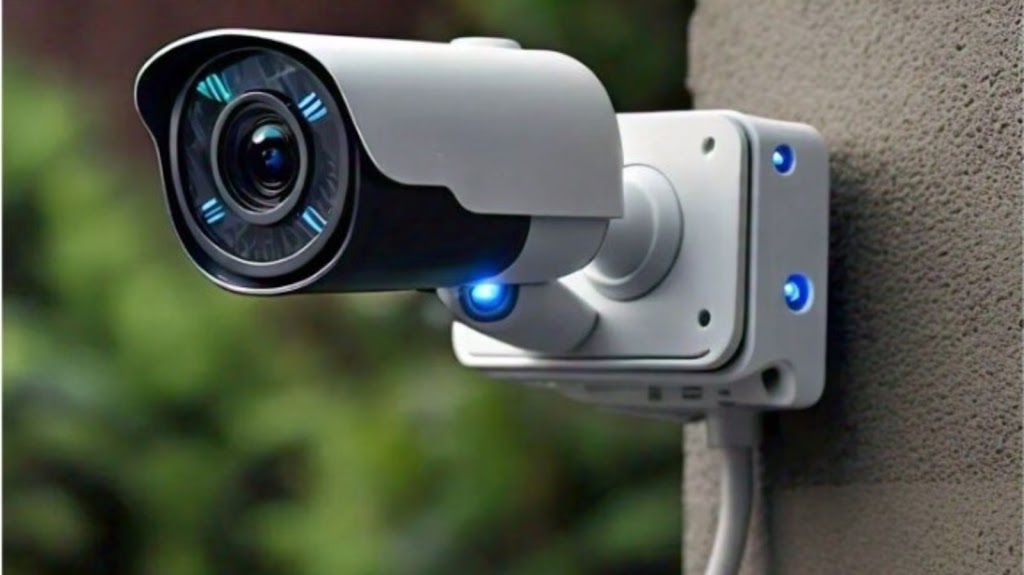1. Understand Your Security Needs
Before diving into the features and specifications, consider your specific security needs:
- Location: Do you require surveillance equipment that operates either inside or outside? Or both?
- Purpose: You need cameras for multiple functions including observation of a particular area or watching out for household intruders or monitoring your pets.
- Budget: What’s your price range? The costs for cameras span widely because of their diverse feature profiles.
When you establish what you specifically need you can eliminate various camera options from consideration.
2. Types of Home Security Cameras
Familiarize yourself with the main types of security cameras to determine which suits your requirements:
a. Wired Cameras
- These cameras connect directly to your home electricity or record signals on digital video recorder hardware.
- Pros: Reliable, uninterrupted footage.
- Cons: Installation can be complex.
b. Wireless Cameras
- These cameras link to Wi-Fi networks while running on battery power.
- Pros: Easy to install and relocate.
- Cons: Unlike wireless cameras they might need frequent battery replacement when outdoors. Additionally they can be temporarily disrupted when experiencing network problems.
c. Indoor Cameras
Ideal for monitoring inside your home.
- Pros: Compact and discreet.
- Cons: Limited to indoor use.
d. Outdoor Cameras
- Designed to withstand weather conditions.
- Pros: These devices come with nighttime vision capabilities in addition to their durability.
- Cons: May require more robust installation.
3. Key Features to Look For
When choosing a security camera, consider these essential features:
a. Video Quality
- Detect cameras providing 1080p HD quality resolution to ensure crystal clear image quality.
- Security cameras which provide 4K resolution deliver exceptional clarity while running a higher cost than other models.
b. Field of View (FOV)
- Sected field of view angles above 120 degrees across 180 degrees decrease the total requirement for security camera deployment.
c. Night Vision
- The functionality of outdoor cameras depends on night vision features which create image clarity during poorly lit situations.
- The choice between infrared or color night vision will provide enhanced performance.
d. Motion Detection
The device preserves storage area through its capability to document slide shows only when it detects motion shifts.
Advanced motion detection technology enables models to recognize which detected objects represent people and animals and vehicles.
e. Storage Options
- Local Storage: SD cards or DVRs.
- Cloud Storage: The system features remote monitoring yet charges users periodic costs through subscriptions.
f. Two-Way Audio
- The built-in camera feature provides two-way communication that enables security staff to interact with people outside or to warn away possible intruders.
g. Smart Home Integration
- Make sure your camera purchase includes compatibility with Alexa Google Assistant or Apple HomeKit design for effortless operation.
4. Weather Resistance and Durability
When choosing outdoor cameras always select ones that both resist weather and last long. Check for:
- IP Rating: Uncompromised protection against dust and water exists in cameras which have an IP rating greater than or equal to IP65.
- Temperature Tolerance: Important for extreme climates.
5. Power Source Options
Consider how the camera will be powered:
- Battery-Powered Cameras: The cameras enable flexible operation through their internal battery supply although they need to be recharged regularly or have their batteries replaced periodically.
- Hardwired Cameras: Continuous active power supply comes at the cost of extensive installation complexity.
- Solar-Powered Cameras: Eco-friendly and suitable for remote areas.
6. Privacy and Security
Data protection alongside video monitoring capabilities represents an essential feature for your security camera. Look for:
- Encryption: Footage protection becomes possible through end-to-end encryption.
- Privacy Features: Your home security system should offer physical shutters together with automatic recording interruptions when you are present at home.
7. Popular Brands to Consider
Some trusted brands in home security cameras include:
- Arlo: Known for high-quality wireless cameras.
- Ring: Offers excellent integration with smart home systems.
- Nest: Google’s smart cameras with advanced AI features.
- Blink: Budget-friendly and user-friendly options.
- Reolink: Versatile options with no monthly fees.
8. Set a Realistic Budget
Home security cameras vary in price from as little as $50 up to $500 and beyond. Consider:
- Initial purchase price.
- Subscription fees for cloud storage or advanced features.
- Installation costs, if applicable.
9. Check product feedback and conduct tests before making your purchase.
When buying security cameras the consumer should research both reviews from past users and examine actual performance using demo videos. You can return a camera to plenty of retailers if it fails to meet your standards.
10. Final Checklist Before Buying
Before making your purchase, ask yourself:
- Will this camera work properly for my desired environment (and weather condition and network connectivity requirements)?
- Do this camera possess the necessary features I need including “night vision” and “motion detection”?
- The camera stays within my financial constraints both at purchase and in ongoing operating expenses.
Selecting an appropriate home security camera stands as an essential decision process for shielded residential security and personal safety. The combination of needs assessment and option comparison and research leads to decisions that deliver security peace of mind as well as cost-effective value. Happy shopping, and stay safe!

